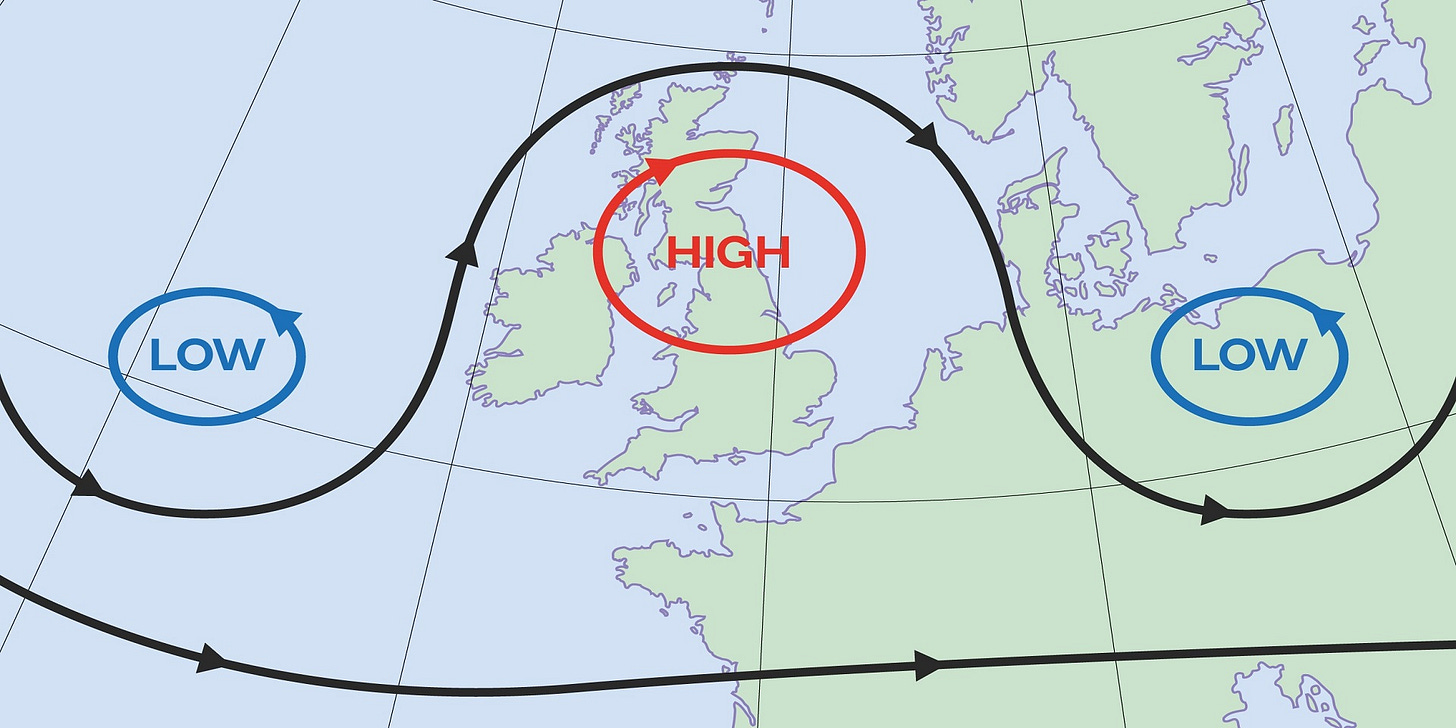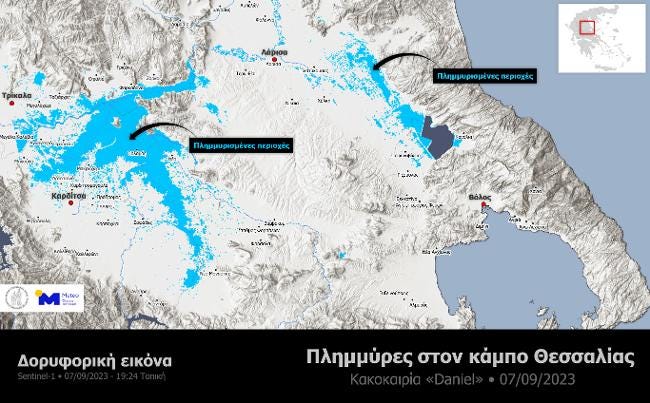The Omega Block and the Deadly Floods in Greece
Understanding un unusual weather system
An Omega Block is a weather pattern in which a zone of high pressure is sandwiched between two zones of low pressure. It forms a shape like the Greek letter Ω, hence its name. This type of pattern can disrupt the normal eastward movement of weather systems, leading to extreme conditions such as heatwaves, floods, and storms in various regions. An Omega block has been in place over Europe this week, leading to some extreme weather in many areas, including Bulgaria, Turkey, and Greece.

On Monday, September 4th, a low-pressure system emerged over the eastern Mediterranean, triggering a storm named Daniel over the Ionian Sea. This storm unleashed torrential rain, delivering an astonishing amount of rainfall equivalent to a year's worth in just 18 hours in Central Greece. The consequences were devastating, as flooding and landslides wreaked havoc on the affected areas. So far, six people have died as a result of the storm, and the exact number of stranded and missing people is unknown. It is one of the worst natural disasters in the region’s history.
Satellite data from the radar of the European satellite Sentinel-1 that passed over Greece on Thursday, September 7, show that a large part of the plain of Thessaly is flooded. In eastern Thessaly, the area of Lake Karla is almost as large as it was before it was drained in 1962 for agriculture. A total of about 720,000 acres of flooded areas are estimated.

Over in the western Mediterranean, Spain has also seen some torrential rain this week, linked to a cutoff low-pressure system. A cutoff low-pressure system is a low-pressure system that becomes detached or severed from the main atmospheric circulation and spins off independently. It can cause extreme weather such as heavy rain, snow, hail, thunderstorms, or strong winds in different regions.
Apart from the flooding and storm-related consequences, the Omega Block has also been responsible for unprecedented temperature anomalies across central and northern Europe. Over the past few days, temperatures in these regions have consistently hovered between 5°C and 10°C above the seasonal average. This heatwave has affected countries like the UK, with the trend expected to persist throughout the weekend.
If you are wondering if there is any relation between climate change and the omega block phenomenon, some experts suggest that climate change could make omega blocks more frequent or persistent in the future. This is because climate change can alter the temperature difference between the poles and the equator, which affects the strength and shape of the jet stream.
The interaction between oceanic and atmospheric conditions also plays a significant role in shaping the Omega Block phenomenon. The temperature of the sea surface can influence the amount of moisture available for weather systems. In the case of the storm Daniel in Greece, the warm seas in the eastern Mediterranean provided the necessary moisture for the storm to intensify rapidly.
Forecasting the Omega Block is a challenging task due to its complex formation and persistence mechanisms. However, advancements in meteorological models and data analysis techniques have improved the ability to predict the presence and duration of this weather phenomenon. Timely and accurate forecasts can help authorities and communities prepare for the potential impacts of the Omega Block, such as by implementing flood prevention measures, issuing extreme heat warnings, and ensuring the resilience of critical infrastructure.




